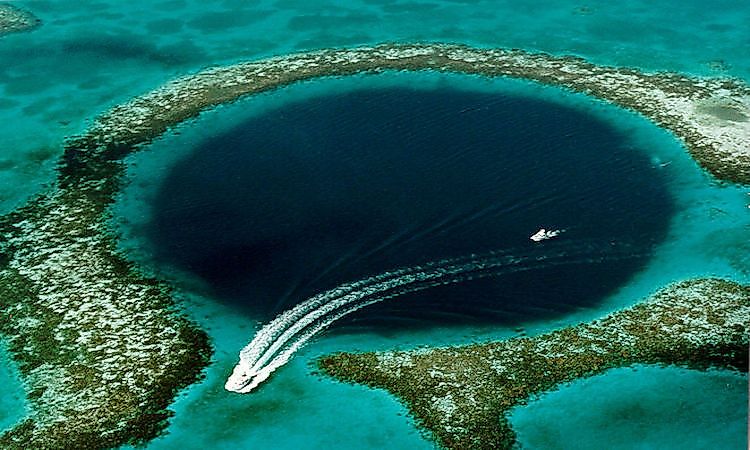What Are Sinkholes?

What Are Sinkholes?
The sinkhole, also known as swallow hole or cenote, is a hole or depression in the ground that results from some form of a collapse of the surface layer. As the name suggests, a sinkhole resembles a cylindrical hole or depression either deep or shallow depending on the magnitude of the force forming the hole and the soil layer. Most of the sinkholes are formed through a karst process which involves the dissolution of chemicals. The sizes of Sinkholes vary in both diameter and depth and also change in form depending on the layer of soil on which the hole has been formed. Sinkholes can also be formed gradually or suddenly and are common in any part of the world.
Formation Of A Sinkhole
Sinkholes can be formed naturally or artificially through human activities. The natural formation of a sinkhole involves processes such as erosion or detaching of soluble bedrocks by percolation of water leading to the roof of the cave collapsing or lowering the water table. The process known as Suffusion is a major natural process through which most of the sinkholes are formed. The processes involve groundwater dissolving the carbonate rocks which holds the sandstone and carry away the loose particles which gradually result in the formation of a void. Surfaces with limestone or other carbonate rocks are most likely to experience the formation of a sinkhole because these stones are likely to dissolve naturally when they come into contact with the ground water. The natural process of sinkhole formation can be sudden because the surface land remains intact until there is not enough support then suddenly collapse. The artificial formation of a sinkhole is mainly contributed by human activities such as a collapse of mines. Sinkholes can also occur in urban areas due to the collapse of drainage or sewer lines or over-pumping of groundwater. Change land surface such as the creation of industrial and runoff-storage ponds can also lead to a formation of the sinkhole.
Occurrence Of Sinkholes
Sinkholes are common in a karst landscape. The landscape may have several sinkholes within a small radius giving it a pock-marked appearance. Sinkholes in Khammouan in Laos and Mamo Plateau in Paua New Guinea were formed as a result of the Karst process. Sinkholes are also formed in thick layers of limestone with their formation facilitated by the presence of the ground water which dissolves the stones. The largest known sinkhole formed as a result of the dissolution of limestone is the Xiaozhai Tiankeng in China which measures 662 meters deep. The sinkholes of Sistema Zacaton in Mexico were formed through an unusual process. The over 20 sinkholes were shaped by the volcanically heated groundwater. The state of Florida is synonymous with frequent sinkholes, especially in the central part. Other places around the world with numerous sinkholes include Murge in Italy and Sima Humboldt and Sima Martel in Venezuela.
Significance Of Sinkholes
Some Sinkholes could be used as disposal sites for all forms of waste. However, the disposal of waste in some sinkholes has contributed to the high pollution of groundwater. Some Sinkholes in the past were used to deposit precious material and to offer human sacrifices in the Maya civilization. Some sinkholes formed near the coral reefs are popular diving spots for water lovers. Some spectacular sinkholes around the world are major tourist attraction sites.











